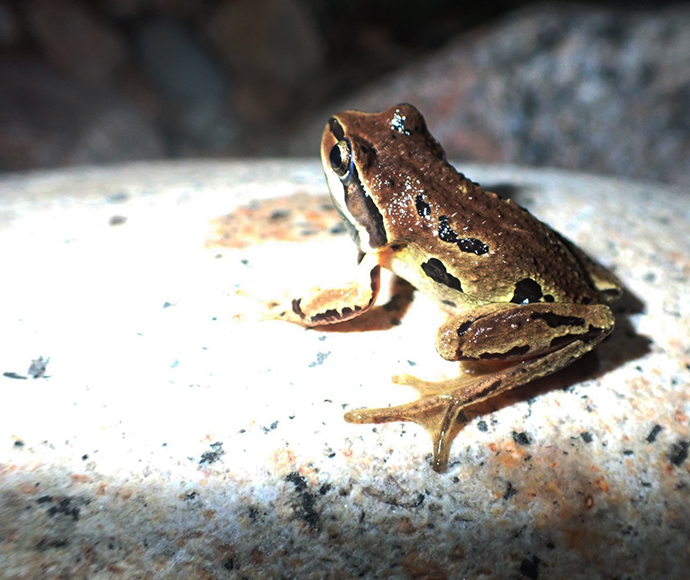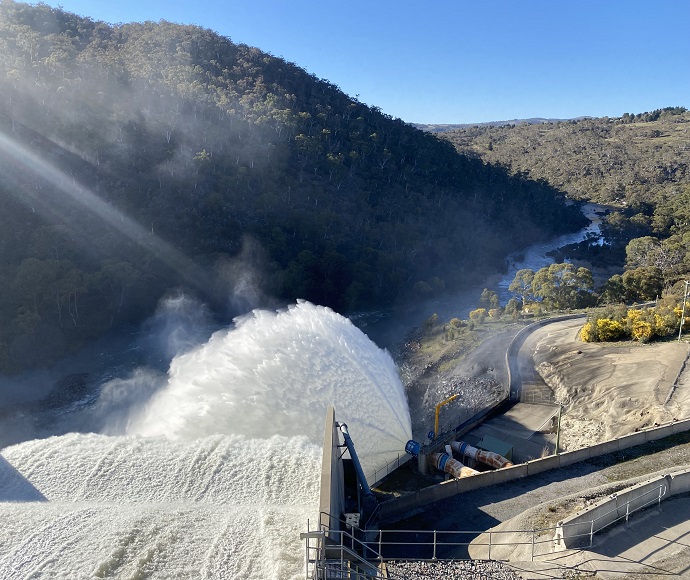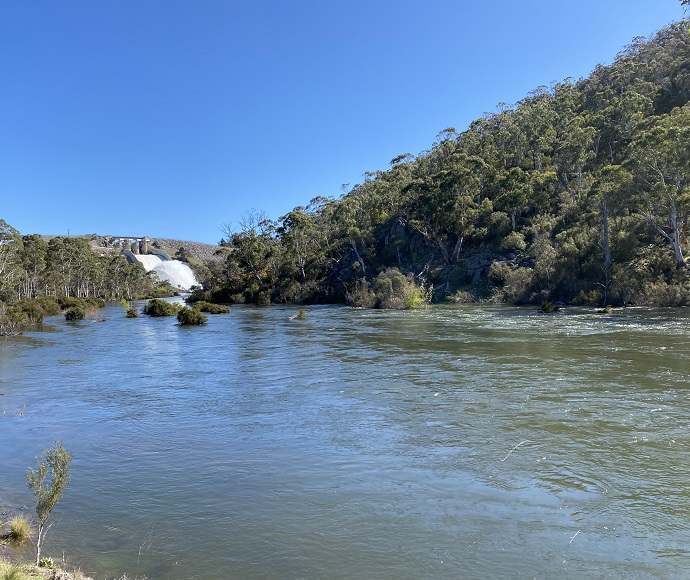The Snowy Advisory Committee met via video conference on 13 December 2023 and 30 January 2024 to finalise environmental water plans for 2024–25. The committee was also updated on the Snowy Water Licence Review and the measures to improve the health of the Upper Murrumbidgee that were announced by the Australian Government.
2023 Snowy and montane highlights
The committee reflected on key challenges and outcomes for 2024, including the Snowy Water Licence Review, monitoring programs and environmental water management opportunities.
Snowy River flushing flow first
Flushing flows (>5,000 ML/day) provide multiple environmental benefits to improve the health of the Snowy River, including mobilising sediment, providing connectivity to wetlands and backwaters, and encouraging fish passage.
Due to Jindabyne Dam operational requirements and management, a flushing flow, where water is delivered over the spillway gates into the Snowy River, is not always achievable and usually not until spring in each water year.
High storage levels in Jindabyne Dam in early 2023 provided an opportunity to deliver a flushing flow in May instead of the usual spring timing. The committee was pleased to see the event occur, as healthy rivers require flow variability and delivering a flushing flow at various times of the year contributes to improving river health.
Snowy Water Licence Review update
As part of the Snowy Water Licence Review actions, the NSW Government investigated options to deliver environmental water to the Snowy River water via Mowamba Weir to increase the flexibility in flow delivery arrangements that help achieve environmental outcomes and be able to respond to natural cues such as rainfall events.
The committee has assisted the licence review process by providing advice on social and economic values. The department is considering the recommendations and next steps.
A webinar to update the community on the licence review was provided on 7 February 2024 and a recording is available.
Monitoring activities to inform future water management
The department has undertaken or commissioned several monitoring projects to inform the response to environmental flows and health of the Snowy and montane rivers. Monitoring has included frog and habitat assessments, fine sediment changes, water bug monitoring, environmental DNA sampling for fish and measuring water temperature and depth.
The monitoring data collected is critical for the committee to provide informed advice for managing environmental flows. The committee plans to hold a workshop in May 2024 to further discuss the monitoring program and outcomes.
Planning water for the environment releases for 2024–25
A moderate allocation of 204,963 megalitres (ML) of water for the environment is available for the Snowy River and a volume equivalent to 87,090 ML for the montane rivers. The committee discussed environmental water management in 2024–25, incorporating the best available science and expert knowledge.
In previous years, the timing of environmental releases has been scheduled for the water year, and there has been limited opportunity to adaptively manage flows in response to natural cues and other environmental needs. The committee was delighted to hear that the department is working with Snowy Hydro to incorporate changes to the timing of flow releases through the year for the Snowy and upper Murrumbidgee rivers for 2024–25.
Snowy River
The planned variable flow releases from Jindabyne Dam are designed to replicate a snow-melt river. The daily flow pattern incorporates a series of high flows and five 8-hour peaks, including a flushing flow. These flows aim to improve river channel health by mobilising sediment, encouraging productivity, and connecting wetlands and backwaters to the river that support water-dependent plants and animals such as frogs and water bugs, supporting native fish movement, including flows for Australian grayling, and supporting estuary health.
Adaptive management of flows is commonly used in environmental water management across the Murray Darling Basin and trials are planned for the Snowy River this year. The trial proposals include:
- Trigger flows – respond to natural flow cues based on real-time Thredbo River flow triggers resulting from rainfall events. If triggered, the highest planned release for the month <1,500 ML) will occur in the Snowy River around one day after the Thredbo flow trigger. This will be undertaken on up to 4 occasions throughout the water year.
- Estuary flows – trial and monitor a series of low flow variations to support estuary health and help keep the estuary open during summer and autumn 2025. The department has been working with East Gippsland Catchment Management Authority and Snowy Hydro to design the daily flows and allow some flexibility to increase flow rates in 2025 if conditions are dry. If required, the water would be moved from a higher flow period to achieve this.
When connected to the sea, the Snowy River estuary supports critical habitat for native fish migration and breeding including for the Australian grayling, which is nationally listed as vulnerable.
Montane streams
A total of 139.007 gigawatt hours of foregone Snowy Hydro electricity generation is available for 2024–25. The pre-determined gigawatt hour conversion rate to ML varies for the different montane reaches depending on the amount of foregone electricity that could be generated. For the targeted montane rivers in the upcoming water year this equates to 87,090 ML.
There will be sufficient environmental water to provide flows in the upper Murrumbidgee, upper Snowy River, Goodradigbee River and the Geehi River. Flows to these rivers will provide essential habitat for water-dependent animals, including water bugs, frogs, native fish and platypus.
The committee supported the proposal to allocate less water to the Goodradigbee River in 2024–25 to allow greater flows in the upper Murrumbidgee River, which supports the endangered Macquarie perch.
Upper Murrumbidgee River
The planned environmental releases will provide some natural flow seasonality and flow variability. This includes increased flows and peaks during October and December 2024 to support Macquarie perch movement between breeding sites.
There will be several short cease-to-flow periods with no flows delivered from Tantangara Dam from January to April 2025. Small pulses will be delivered during this time to allow limited fish movement and recharge the pools.
Similar to the flow trials for the Snowy River outlined above, the department is working with Snowy Hydro to implement flexibility by delivering 2 trigger flows for the upper Murrumbidgee. In June 2024 and April 2025, it is proposed to deliver a moderate peak (less than 500 ML/day) each month in sync with a rainfall event. The timing of the peak's delivery would be triggered by an increase in the hourly flow at the Murrumbidgee at the upstream Tantangara gauge.
These trigger flows aim to support natural cues, including productivity and Macquarie perch movement.
Next committee meeting
The next committee meeting will take place in May. A community meeting is planned as part of this, where the water release plan for the coming year and the outcomes of monitoring and investigations are presented to the public.
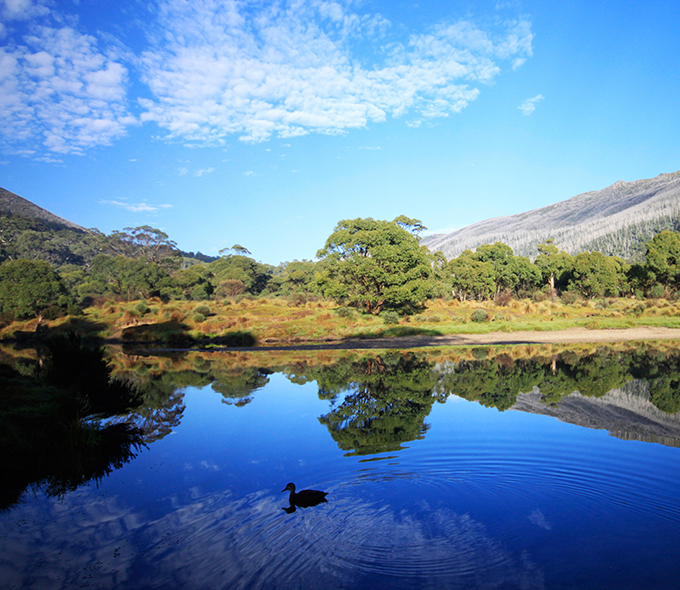



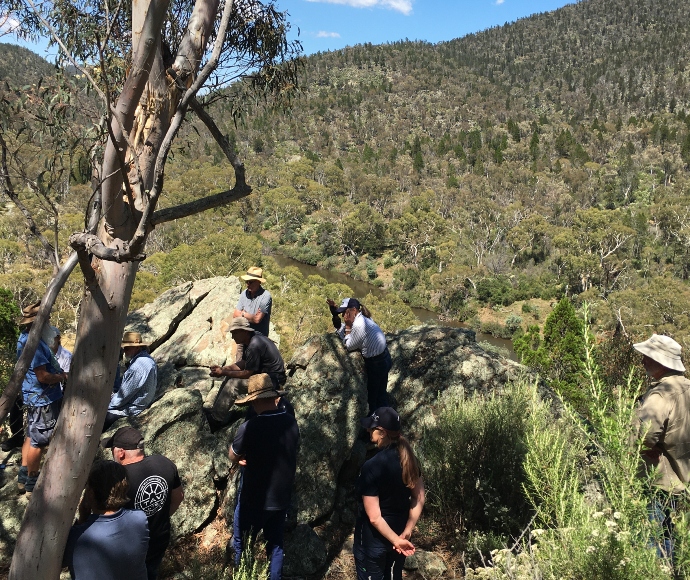
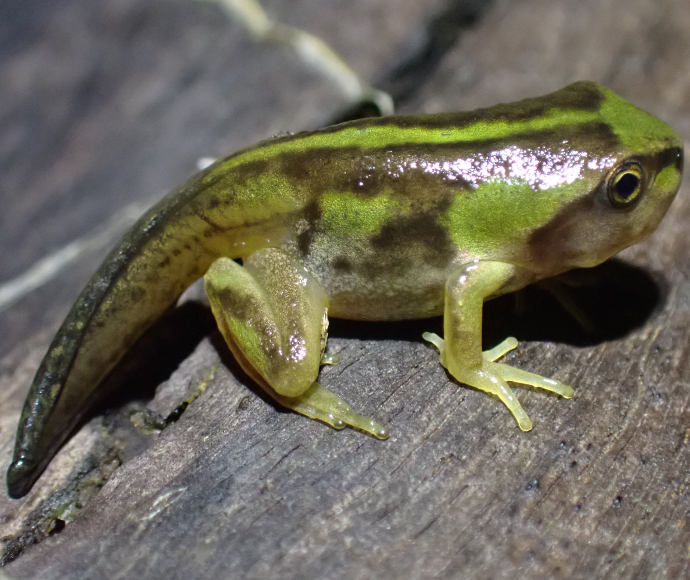
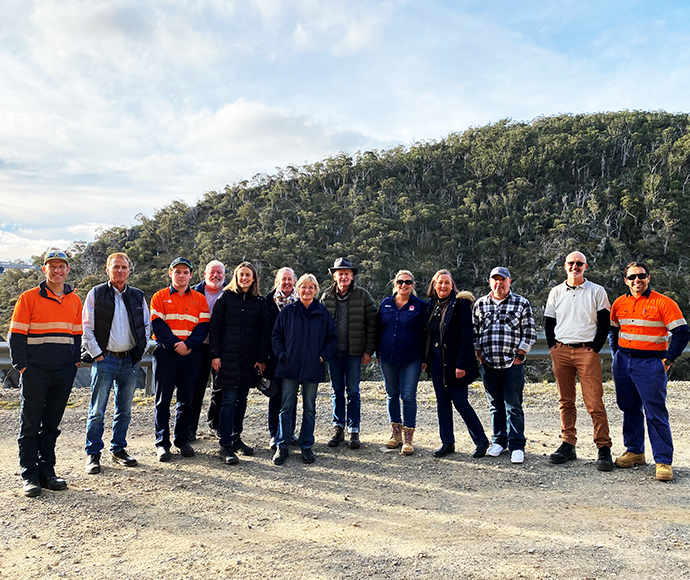
 The Snowy Advisory Committee met via video conference on 9 February to finalise environmental water planning for 2022–23, review environmental water delivery so far for 2021–22 and receive a presentation from Australian National University on the Snowy Water Inquiry Outcomes Implementation Deed (SWIOID).
The Snowy Advisory Committee met via video conference on 9 February to finalise environmental water planning for 2022–23, review environmental water delivery so far for 2021–22 and receive a presentation from Australian National University on the Snowy Water Inquiry Outcomes Implementation Deed (SWIOID). 
